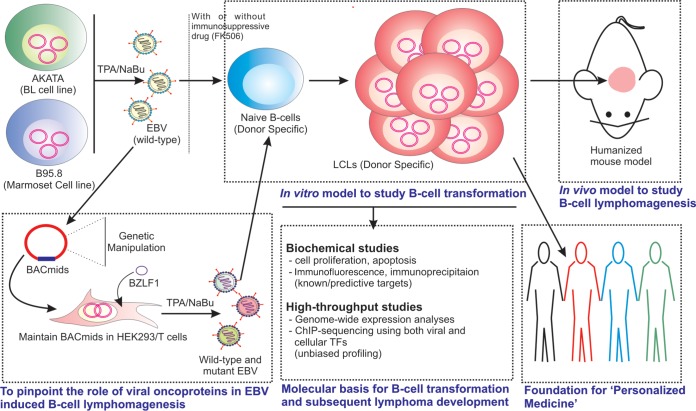FIG 2.
Systematic strategy for studying EBV-induced B-cell transformation and lymphomagenesis. Burkitt’s lymphoma (BL) cell line Akata or marmoset cell line B95.8 are used to generate virus particles and subsequent infection to nascent B lymphocytes in the absence or presence of an immunosuppressive drug, FK506. The addition of FK506 facilitates the transformation process though inhibiting T-cell-mediated immune surveillance. Alternatively, the whole-virus genome is cloned into BACmid and maintained in epithelial cells (HEK293 or HEK293T). In order to pinpoint the function of viral latent genes and respective domains, genetically engineered BACmids are used to transform naive B cells. B cells infected with wild-type virus are eventually growth transformed into continuously proliferating lymphoblastoid cell lines (LCLs), expressing latency III program with a full panel of viral latent transcripts, similar to many EBV-associated lymphomas in an HIV-infected population. Several biochemical assays and high-throughput strategies are employed to delineate the underlying mechanism of B-cell transformation and subsequent B-cell lymphoma development. Additionally, these LCLs are used to study EBV-induced B-cell lymphomagenesis in a humanized mouse model. Since the LCLs possess donor-specific genetic variations, they can provide an ideal in vitro model to study pharmacogenomics, leading to futuristic “personalized medicine.”

